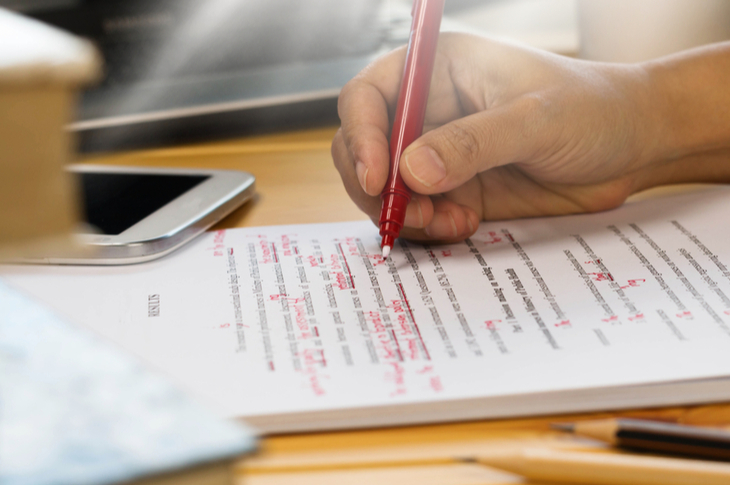Must-use editing hacks to help editors create error-free content

A rightful take on first drafts, as a content creator you know the time, effort and research that is put in to churn out a good read. As a human, grammatical error and typos are but natural; but as an editor, it is a blasphemy. Improving your post with grammatically immaculate words can be the simple tweak your writing needs to engage visitors for a longer time. With questions like, ‘Are you adding value with your words that are succinct and useful?’ is something every editor ponders over. So, here are some editing hacks that can up your grammar game, eliminating the possibility of typos and punctuations to make your content a better read.
“The first draft of anything is shit.”- Ernest Hemingway
1. Read Your Piece (Again)
The foundation of a good piece lies in its editing. The first step is to tune out, take a break and clear your head as you sit to read what you have written. The more attentive you are while reading, the easier it will be to edit the work. While reading it, look at your work from a new perspective; does the content make sense? Will it require more research? If you find room for improvement, tweak it as needed. Reading and re-reading your writing can give you an insight into your capabilities, pushing you to submit your best work.
2. Use More Synonyms
While beautiful and alluring almost mean the same thing, the latter sounds less redundant. Most grammatical errors steam from the use of commonly used words that can give your writing an over-used appeal. Try to replace these mundane sounding words with their synonyms while editing. This effort can also improve the overall tonality of your writing.
3. Consistent Flow and Clean Language
One of the most desirable features in a piece of content that every editor wants is flow. If the writing is disjointed or confusing, addressing the issue is essential. For instance, run-on sentences require a comma or a semi-colon to turn a very long sentence into two complete, correct ones. Subject and verb disagreements sneak up in writings and are often dismissed. Putting your writing through an app or an online writing tool can help you catch errors and correct them.
4. Edit in Parts
Editing is a fluid process, and editors often make the mistake of reworking an entire piece in one go. A useful hack to ensure a piece of content has absolutely no grammatical errors is to do so in small bursts. Unless it is a small piece, try to edit short paragraphs. This will prevent you from getting overwhelmed by the length of the writing and provide a new insight to spot grammatical mistakes.
5. Make a Process
Editors have their own unique style of editing, but for flawless work, it is best to maintain a standard work procedure. Execution for each piece will be standardised, and you will be able to deliver consistent quality every single time. Start with reading the draft, use an online spelling and grammar tool to help you highlight mix-ups, read it from a reader’s viewpoint, run a skim test and format the writing.
Remember, at the end of the day, an editor’s job isn’t only to look for grammatical errors and typos. It’s about creating a piece of content that reads well, is easy to understand, has a good flow of information and is error-free. A clean well-edited piece of content each time will set you apart from novice editors.
